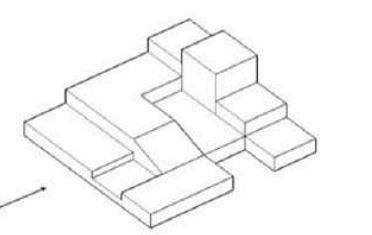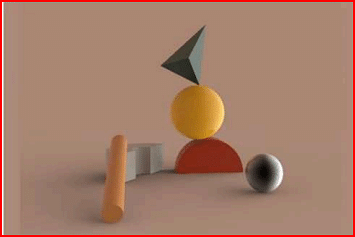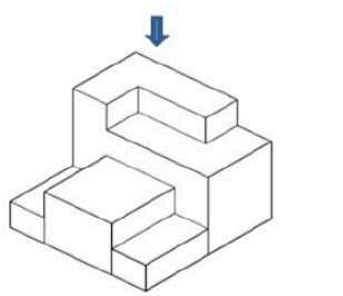Question:
If solids (P) and (Q) are combined to form solid (R) there will be a new solid (X) is generated due to the intersection (P) and (Q) as represented in highlighted colour. How many surfaces does this new solid have ?
Assume solids (P) and (Q) are identical regular hexagon with six sides.

If solids (P) and (Q) are combined to form solid (R) there will be a new solid (X) is generated due to the intersection (P) and (Q) as represented in highlighted colour. How many surfaces does this new solid have ?
Assume solids (P) and (Q) are identical regular hexagon with six sides.

Assume solids (P) and (Q) are identical regular hexagon with six sides.

Updated On: Jun 20, 2024
- 6 SIDES
- 8 SIDES
- 10 SIDES
- 12 SIDES
Hide Solution
Verified By Collegedunia
The Correct Option is C
Solution and Explanation
The correct option is (C): 10 SIDES.
Was this answer helpful?
0
0
Top Questions on 3D Composition
- Identify the correct side (front) view for the given 3D volume (as indicated by the arrow) from the options given below

- NATA - 2023
- Drawing and Visual Composition
- 3D Composition
- Choose any four most appropriate principles/ elements of design which can be observed in the given 3-Dimensional composition.

- NATA - 2023
- Drawing and Visual Composition
- 3D Composition
- Identify the correct side elevation view (as indicated by the arrow) for the given top view of Pentagons stacked on a horizontal plane.

- NATA - 2023
- Drawing and Visual Composition
- 3D Composition
- Identify the correct TOP view for the given 3D form from the given options

- NATA - 2023
- Drawing and Visual Composition
- 3D Composition
- Identify the correct 3D figure from amongst the answer options, which has the top view, front view, and right-side view, as given in the problem figure.

- NATA - 2023
- Drawing and Visual Composition
- 3D Composition
View More Questions
Questions Asked in NATA exam
Identify the dwelling type.

- NATA - 2025
- General Knowledge
- What is the correct mirror image of the word "LEFT"?
- NATA - 2025
- Mirror Image
``Kick the bucket'' -- Select the correct phrase meaning
- NATA - 2025
- General Aptitude
Mantri Mandir -- Where is it located?
- NATA - 2025
- Architectural Knowledge
Count the no of surfaces

- NATA - 2025
- Architectural Knowledge
View More Questions